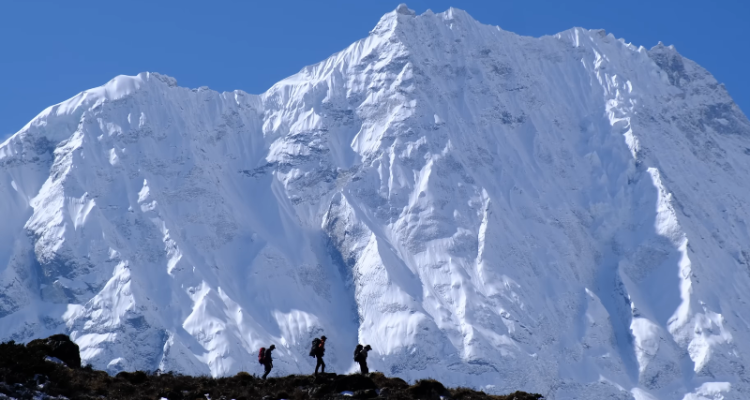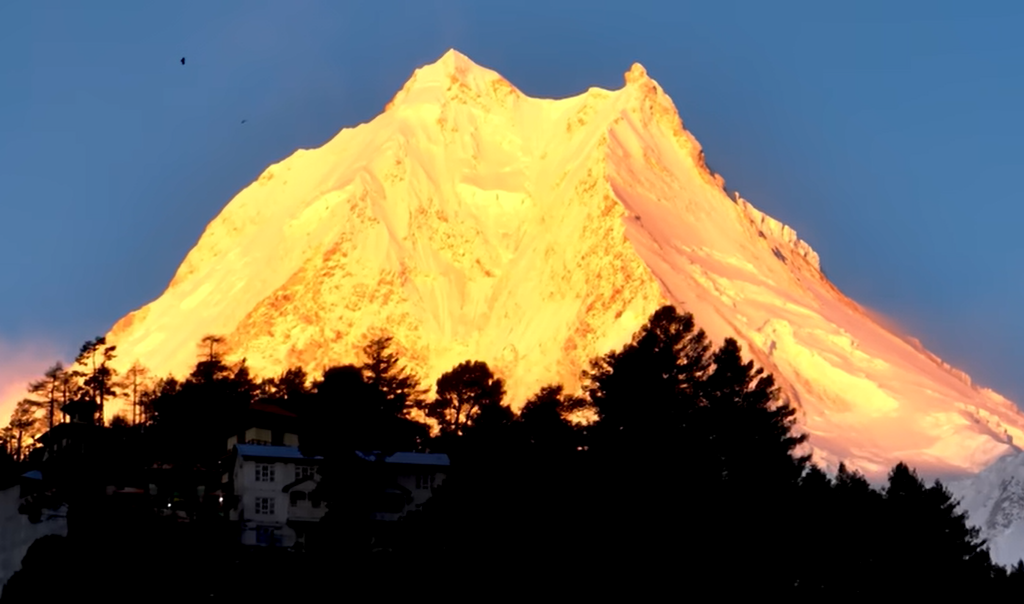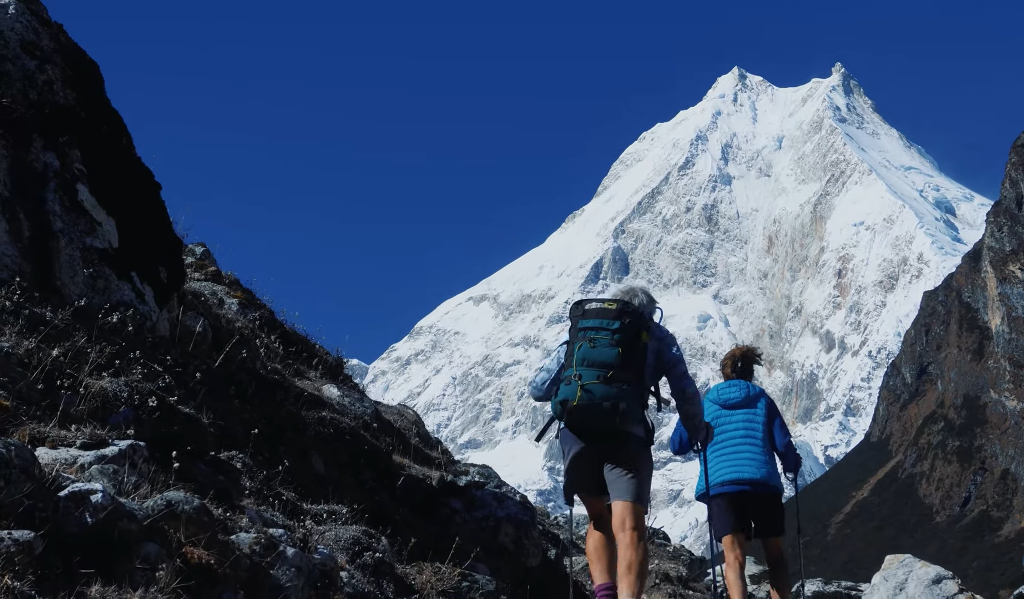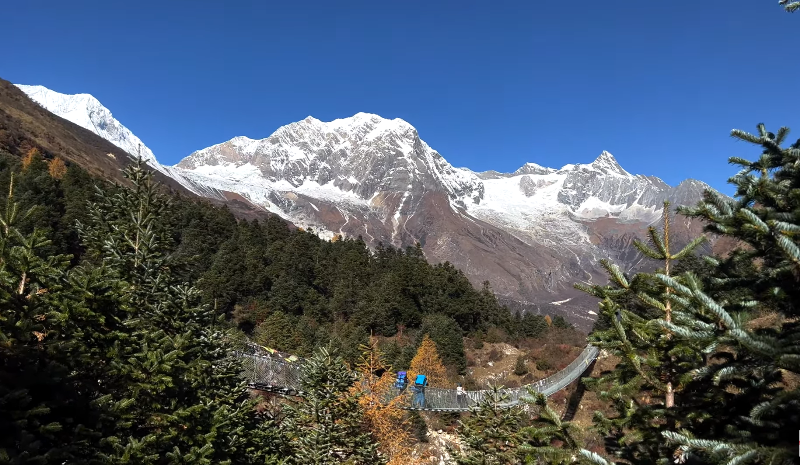March 9, 2024

The Nar Phu Valley trek permit, a gateway to the hidden gem of the Manang region, serves as the key to unlocking the wonders of this untouched terrain. To embark on this extraordinary journey, trekkers must obtain two essential permits: the Nar Phu Valley Restricted Area Permit (RAP) and the Annapurna Conservation Area Project Permit (ACAP).
The ACAP, facilitating environmental conservation efforts, can be acquired by trekkers at designated offices in Kathmandu or Besisahar. This crucial permit comes with a cost, but it contributes to the preservation of the pristine landscapes surrounding Nar Phu Valley.
However, the exclusive Nar Phu Valley Restricted Area Permit (RAP) can only be procured through registered Nepali trekking agencies. These agencies play a pivotal role in facilitating the permit application process on behalf of the trekkers. The RAP not only ensures controlled access to the valley but also supports the local communities through regulated tourism.
The cost of these permits varies, with the RAP being relatively higher due to its restricted nature. The fees contribute to conservation initiatives, infrastructure development, and the overall sustainability of the Nar Phu Valley. It’s important to note that obtaining these permits independently can be a complex process, underscoring the significance of partnering with a reputable trekking agency.
Once armed with the necessary permits, trekkers can delve into the heart of Nar Phu Valley, discovering its treasures—the ancient Tibetan culture, historic trade routes, towering canyons, and magnificent rock formations. This immersive experience, coupled with the responsible acquisition of permits, ensures that Nar Phu Valley remains a preserved sanctuary for generations of adventure seekers to come.

Sunset View on Manaslu Mountain
The best time to trek in Nar Phu Valley is from late September to November or in spring from March to May. During these periods, the weather is clear, not too hot, and there’s less chance of rain, making it ideal for trekking. In winter (December to February), it gets very cold with snow-covered paths, and in the monsoon season (June to early September), heavy rainfall can make the trails difficult. So, for a more comfortable and enjoyable trekking experience, it’s recommended to plan your visit during the post-monsoon or spring seasons.
To obtain a permit for the Tsum Valley trek, you need to follow a specific process. Firstly, visit the Immigration Office in Kathmandu with your original passport to acquire the necessary trekking permit. Additionally, head to the Nepal Tourism Board located at Bhrikuti Mandap to secure the Manaslu Conservation Area Permit (MCAP) and Annapurna Conservation Area Permit (ACAP). Ensure you have passport copies and passport-sized photographs for the application process at these offices. This dual-step approach ensures compliance with the permit requirements and allows for a smoother trekking experience in the stunning Tsum Valley.
Nar Phu Valley, nestled close to the Tibetan border, is classified as a restricted area by the Nepalese government. This special designation serves multiple purposes, such as bolstering border security, managing tourism, and safeguarding the rich cultural and historical heritage of the region.
To explore the enchanting landscapes of Nar Phu Valley, trekkers must obtain a Restricted Area Permit (RAP). This permit is a necessity due to the valley’s proximity to the Tibetan border and falls within the Manang region. The RAP acquired covers specific areas, including Narpa Rural Municipality (ward number 1 to 5) and Nasho Rural Municipality (ward number 6 and 7).
Securing the Nar Phu Valley RAP is a task for your government-registered and licensed Nepali trekking agency, as they can obtain it on your behalf. The cost of the permit varies based on the season of travel and the duration of your stay in the restricted areas. Notably, the Nar Phu Valley RAP tends to be more expensive compared to permits for other restricted regions, contributing to the overall trekking cost in this captivating area.

Manaslu especial Permit
The cost of the Restricted Area Permit (RAP) for Nar Phu Valley varies depending on the time of the year. During the autumn months, from September to November, trekkers are required to pay US$ 100 for the initial 7 days and an additional US$ 15 for each extra day spent within the restricted area.
In contrast, for the winter, spring, and summer months spanning from December to August, the RAP fee is set at US$ 75 for the first 7 days. Subsequent days spent in the restricted area during this period incur an additional charge of US$ 15 per day.
These seasonal variations in permit costs contribute to the overall expenses associated with trekking in Nar Phu Valley, making it essential for trekkers to plan accordingly and be aware of the financial implications associated with their chosen time of visit.
The Nar Phu Valley trek necessitates obtaining the Annapurna Conservation Area Project (ACAP) permit, a mandatory requirement due to the trail passing through the Annapurna conservation area, encompassing Manang. This fee is instrumental in the development of trekking trails and the safeguarding of the region’s rich flora and fauna. The cost of the ACAP permit varies, with SAARC nationals required to pay NRs. 1000 per person (approximately US$ 10), while other nationals are charged NRs. 3000 per person (approximately US$ 25). These fees contribute directly to the preservation efforts and sustainable management of the Annapurna region.
For the captivating Nar Phu Valley trek, adventurers must secure the Manaslu Conservation Area Permit (MCAP). This essential permit is a prerequisite as the trek leads through the mesmerizing Manaslu Conservation Area. The MCAP fee varies for SAARC and other nationals, with SAARC citizens required to pay a nominal sum of NRs. 200 (approximately US$ 2), ensuring their entry into this pristine natural haven. Meanwhile, other nationals are obligated to pay NRs. 3,000 (approximately US$ 25) for the MCAP, contributing directly to the preservation and sustainable management of the Manaslu region. This modest investment plays a vital role in safeguarding the unique biodiversity and ensuring the responsible exploration of the Nar Phu Valley.
To get Entry permit for the Nar Phu Valley Trek, you need to give some papers. These are:

Stunning Manaslu Mountain View
Embarking on the Nar Phu Valley trek is an exhilarating adventure, but it comes with specific terms and conditions that both aspiring and seasoned trekkers must be aware of. The following guidelines aim to provide clarity on the prerequisites and regulations associated with trekking in the Nar Phu Valley:
Age Exemption:
Children below the age of ten are exempt from the permit requirement, making their entry free of charge.
Non-Refundable and Non-Transferable Permits:
Both the permits, namely the Restricted Area Permit (RAP) and Annapurna Conservation Area Permit (ACAP), are non-refundable and non-transferable.
They are valid for a single entry only, and each permit is intended for individual trekkers.
Issuing Authorities:
Permits can only be obtained from designated offices in Kathmandu, Pokhara, and Besisahar. Checkpoints along the trekking trail do not issue permits.
Adherence to Regulations:
Upon entering the Annapurna Conservation Area, trekkers must comply with the regulations outlined in the National Park and Wildlife Conservation Act, 2029 B.S. (1973).
Mandatory Carry of Permits:
Entrants are required to carry the entry permits throughout the trek and present them to relevant officials at checkpoints as requested.
Age Exemption:
Both the RAP and ACAP costs include Value Added Tax (VAT) and other government taxes.
Filming Prohibitions:
Unauthorized filming within the restricted area is strictly prohibited. Permission must be obtained before engaging in any filming activities.
Restricted Area Limitations:
Permit holders are permitted to visit only the designated areas within the conservation and restricted zones, as specified in the permit.
Understanding and adhering to these terms and conditions ensures a smooth and respectful trekking experience in the Nar Phu Valley. It is crucial for trekkers to be well-informed about these regulations to contribute to the preservation of the natural beauty and cultural integrity of the region.

Mt. Manaslu range
Leave No Trace:
Respect Local Culture:
Stick to Designated Trails:
Wildlife Observation:
Campsite Etiquette:
Water Conservation:
Conserve water by using it judiciously for personal hygiene and cooking.
Avoid polluting natural water sources.
Educational Engagement:
Support Local Initiatives:
Minimize Plastic Usage:
Cultural Heritage Preservation:
These guidelines aim to ensure a sustainable and responsible trekking experience in Manaslu Tsum Valley, promoting conservation and cultural preservation.
Q. How much does a permit for trekking in Nar Phu Valley cost?
A: The cost of a Nar Phu Valley Trekking Permit can vary. It’s best to check with local authorities or trekking agencies for the current price.
Q: How can I get a Nar Phu Valley Trekking Permit in the Annapurna region?
A: You can get the permit through trekking agencies in Nepal. They will help with the paperwork and make sure you have everything needed for the trek.
Q: Are there any rules or things to follow with the Nar Phu Valley Trekking Permit?
A: Yes, there are rules, like sticking to designated routes. It’s important to follow them to protect the environment.
Q: What documents do I need for a Nar Phu Valley Trekking Permit?
A: You will likely need your passport, some passport-sized photos, and other forms. Confirm the exact requirements with the trekking agency or authorities.
Q: Can I get a Nar Phu Valley Trekking Permit when I arrive, or do I need to get it in advance?
A: It’s better to get the permit in advance through a trekking agency. Permits are usually not given on arrival, and trekking without one can lead to penalties.
Q: How long is the Nar Phu Valley Trekking Permit valid for?
A: The permit is valid for a specific time. If you plan to trek beyond that, you might need an extension or a new permit.
Q: Do I need different permits for specific trekking seasons or months?
A: Permit requirements usually stay the same, but it’s good to check if there are any changes during different trekking seasons.
Q: Can I extend the Nar Phu Valley Trekking Permit if I need more time?
A: Extensions might be possible, depending on the rules. Check with authorities or your trekking agency for details on extending permits.
Q: Are there extra permits or fees for trekking in Nar Phu Valley?
A: Depending on your route, you might need additional permits or pay extra fees. Make sure you know all the required permits for your trek.
Q: What happens if I trek in Nar Phu Valley without a valid permit?
A: Trekking without a valid permit is against the law and can result in fines, legal issues, and restrictions on future treks. Always make sure to get the necessary permits.
Related more information about Manaslu region Trek: